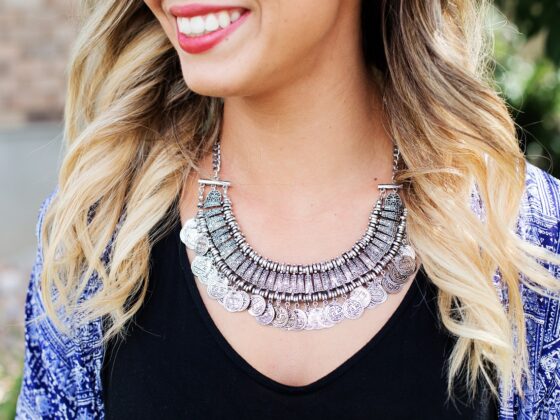Although readymade wicks are available in any craft store, making each part of your candle on your own has a different feeling. Moreover, making candle wicks is not tricky and requires very few supplies, so even newbies can make it.
As you have already seen in the title, I’ll show you a detailed wick-making procedure in this guide. In addition, I’ll talk about a few essential things you must know to make the perfect wicks that burn evenly, produce minimum soot, and don’t cause candle tunneling.
If you are curious to know how to make a candle wick, continue reading ahead.
Related: Candle-Making Supplies: Best Wax, Wicks, Melter, Oils & More
Table of Contents
- 1 Why Is A Proper Candle Wick So Important?
- 2 Types Of Candle Wicks You Can Use In Your Candles
- 3 How To Make A Candle Wick? Step-By-Step Guide
- 4 Can Bad Wicks Cause Candle Tunneling?
- 5 Mistakes To Avoid While Making Candle Wicks
- 6 What Can Be Used As A Candle Wick Substitute?
- 7 How To Make A Candle Wick FAQs
- 8 Takeaway!
Why Is A Proper Candle Wick So Important?
Candle wicks are the most crucial element of a candle. While it’s the most overlooked, I cannot emphasize enough the need for a good candle wick.
While most candle lovers focus on the smell, design, color, and size of the candles, the wicks decide the whole burn quality.
But how do these wicks work? Candle wicks supply the fuel (wax to the flame). The wick absorbs the liquid wax and brings it to the flame to keep it burning.
The burn quality of the candle depends a lot on the wick size. If the wick is too thick, it’ll supply more wax than required, and the candle will produce more soot. And if the wick is too thin, it won’t provide enough fuel, causing the flame to flicker and sputter out.
Therefore, the wick’s quality, size, and length decide how nicely your candle burns and distributes the fragrance.
Related: Best Soy Wax For Candle Making: 5 Fantastic Picks
Types Of Candle Wicks You Can Use In Your Candles
There are different types of candle wicks. While the primary function of the wicks is fuel supply, the burn quality, flame consistency, and release of soot vary from wick to wick.
Following are a few different types of wicks manufacturers prefer to use-
Cotton Wicks
As you can tell by the name, cotton wicks are made from fiber bundles. There are two types of cotton wicks- knitted wicks or flat braid and square braid cotton wicks.
The flat braided ones burn consistently and curl back, looking like the wick has self-trimmed itself. On the other hand, square braided wicks are made from bleached cotton and are more durable.
Metal Cored Wicks
Metal cored wicks are made from metals like- zinc, copper, or tin. They either have a knitted or braided style. These wicks come with a core keeping them straight while the candle burns.
Manufacturers generally prefer zinc or tin wicks because they don’t emit pollutants and are an eco-friendly option.
Wood Wicks
There are two types of wooden wicks- hardwood and softwood. These are recent additions to the candle market. They make a slight cracking sound when you burn them, creating a new fun way of burning candles.
Related: Best Candle-Making Kit: Tried And Reviewed (2023)
How To Make A Candle Wick? Step-By-Step Guide
Now we are clear about different types of wicks. It’s time for the most exciting part: making the wicks. I’ll share the procedure of making two different types of wicks- cotton and wooden wicks. Let’s get started.
Cotton Wicks
Things you’ll need:
- Cotton strings (you can use multiple colored strings)
- Wax
- Scissors
- Pilers
- Wick tab
Procedure:
- Step 1: Cut three pieces of wicks. The length should be eight inches longer than the candle jar. Now take these three wicks together, tie a knot at one end, and start making a braid. But you can skip making braids and use cotton strings.
- Step 2: Melt the wax in a microwave or a double boiler. Once the wax has completely melted, soak the wicks in it for a couple of minutes.
- Step 3: Take out the wicks with the piler and let it dry completely.
- Step 4: Once the braid is dry, feed the bottom of the wick through the wick tab and pinch the top of the wick tab using the piler. Now the wick is ready to use.
Wooden Wicks
Things you’ll need:
- Balsa wood sticks
- Scissors
- Olive oil
- Wick tab
- Pilers
Procedure:
- Step 1: Cut the wood sticks with the scissor. The wood sticks should be one inch taller than the candle jar.
- Step 2: Take a shallow dish and pour enough olive to soak the sticks thoroughly. Soak the sticks in oil for 20 to 25 minutes. But you can soak them for up to an hour as well. The wooden sticks are already flammable but soaking them in olive oil helps with an even burn. Also, the olive has a clean burn, so there will be less soot.
- Step 3: Take the sticks out of the oil and place them in a wooden towel to soak the excess oil. Don’t harshly rub the sticks. Leave the sticks on the paper towel for some time. The sticks should still feel damp and oily when ready to use, but your hands shouldn’t get sticky or very oily when you pick them up from the towel.
- Step 4: Take a wick tab and lightly push one end of the wood sticks into the tab as far as possible. The wooden wicks are now ready to use. Place it carefully in the candle jar before pouring the wax.
Can Bad Wicks Cause Candle Tunneling?
Yes, wrong wicks can cause candle tunneling; as I said previously, how your candle burns depend significantly on the wicks. If your wicks are too small or too big for the candle size, it’ll cause tunneling.
Therefore, cutting the wicks at the right length and thickness is essential to ensure your wax and fragrance are not wasted.
Related: 7 Best Oils For Candle Making
Mistakes To Avoid While Making Candle Wicks
The only mistake most candle makers repeat is the size of candle wicks. Sometimes people make a wick that’s too thick or thin.
If the wick is too thick for the candle, it will emit more smoke and melt your candle faster. And if the wick is too thin for the candle, it won’t produce enough heat to melt the entire surface of the candle, causing tunneling.
What Can Be Used As A Candle Wick Substitute?
While I always prefer to use traditional wicks for candles, a few substitutes work as wick substitutes. You can use wooden BBQ skewers, chopsticks, and popsicle sticks as candle wicks. But these only work best for pillar candles.
Any paper like- notebook paper, toilet paper, or paper towel can also be used as wicks. But first, you have to dip the papers into a borax solution, then soak them in melted wax and let them dry before cutting the strings.
Another substitute for a typical candle wick is old mop strands. These are almost similar to cotton wicks because they are ultimately braided cotton strands, so it’s perfectly fine to use them as wick alternatives.
How To Make A Candle Wick FAQs
What Is The Best Type Of Candle Wick?
Braided and knitted cotton wicks are the best. They produce tall and even flames without flickering a lot. Also, cotton wicks are the best for scented candles because they spread the aroma beautifully.
What Is The Healthiest Candle Wick?
Cotton, wood, and tin or wicks are the healthiest. They don’t emit any pollutants and do not produce too much soot as well.
Can Any String Be Used As A Wick?
No, you can’t use any string as a wick. Candle wicks should be absorbent fibers to soak the molten wax, and cotton strings are perfect for the job.
Can You Use Toothpick As A Candle Wick?
Even though toothpicks are flammable, they are not good enough to use as a candle wick. The toothpick flame does not emit enough heat to melt the entire candle surface, which may cause tunneling.
How To Make Candle Wicks From Cotton Balls?
You can make thin cotton strings out of cotton balls. Soak them in melted wax, and the candle wicks will be ready to use.
How Can I Reuse A Candle Without Wick?
There are multiple uses of candle wax if the wick gets damaged. You can use scented candles as room fresheners, make candle bars, melt the wax, and make small candles like tealights, etc.
Takeaway!
I hope this guide on making candle wicks was valuable and informative. Let me know which types of wick you like the most. I usually prefer cotton wicks because they are easier to make and provide excellent burn quality. Also, trimming the cotton wicks is easier compared to wooden wicks.











